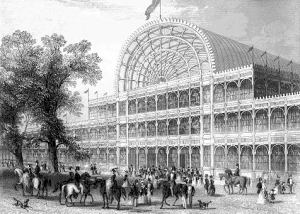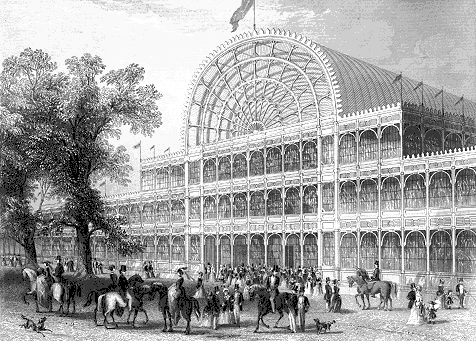An architectural competition to design the new Crystal Palace in London has been launched. Colander, the organisers of the three-stage competition appointed by the site developer ZhongRong International Group, have issued the following brief on their website.
THE ORIGINAL DREAM
The Crystal Palace was originally built as a temporary structure for the Great Exhibition held in Hyde Park, London in 1851. Designed by the garden designer, Sir Joseph Paxton and built by the engineering firm Fox Henderson and Co, it was the world’s largest glass structure of the day, housing more than 14,000 exhibitors from around the world.
The project was designed, manufactured and erected in less than eight months and was completed on time and to a remarkably modest budget. The modular, hierarchical design reflected Paxton’s love of nature and his brilliance as a designer and problem solver. The innovative use of the recently invented, cast plate glass captured the pioneering spirit of the age, to create a glorious building that was then dubbed “The Crystal Palace”.
After the exhibition, the building was redesigned and rebuilt as a permanent structure within a spectacular park setting in Sydenham in 1854, where it enjoyed varied success as a home for exhibitions, concerts and other forms of public entertainment.
It burned to the ground in 1936 and the site remains empty with just the intriguing remains of the foundations and grand staircases, guarded by sphinx like lions.
TODAY’S CHALLENGE
The Crystal Palace has remained a symbol of Victorian innovation, inventiveness and enthusiasm for all things new and wondrous. It has inspired successive generations for over 150 years: to such an extent that an Act of Parliament in 1990 specified that any new building erected on the site must be “in the spirit of Paxton’s original building”.
This is the challenge set by this competition: to reconstruct the Crystal Palace in a way that is faithful to the spirit of the original, in all its ingenuity, scale and magnificence, to create an internationally recognised landmark building. This will include:
- A strong relationship between the Palace and the park
- A permanent structure with a similar footprint to the original Palace
- A translucent and delicate structure, as was the original building
- An adaptable and flexible internal space, guided by the internal spatial qualities of the original Palace
- Active facades
- Design solutions that are responsive to the surrounding heritage landscape
- A long term sustainable role for both the Palace and the park
The new building will be a cultural centre of international standing, responding to modern-day requirements for social, economic and environmental sustainability. It will benefit both the local area and London as a global city, through an awe-inspiring design.
Information about the project can be found on The Crystal Palace Development website, in the Development Brochure and in the Emerging Design Principles.
The ultimate client for this competition: ZhongRong International Group will fund the project. Both the GLA and the London Borough of Bromley have vested interests in the development and members of their Advisory Board will sit on the competition Jury Panel.
PROJECT VALUE AND TIMEFRAME
The anticipated overall value of the building project is £400m. The programme for the competition is explained in the competition format. The overall project programme will be provided to competitors at the start of Stage 2.
THE WINNING CONTRACT
A single contract will be required for architectural services; where competitors respond with teams from multiple organisations, it must be clear which the contracting entity will be and which services are to be sub-contracted to others in the team.
Contracting terms and conditions will be confirmed to short-listed competitors but are likely to be NEC Professional Services or similar. The project delivery & procurement strategy is yet to be determined, however, the successful competitor will need to be prepared to have part or all of their scope of services novated to the construction contractor post procurement (likely to be on completion of RIBA Stage D or E).

